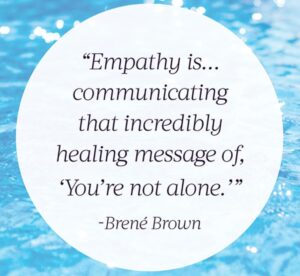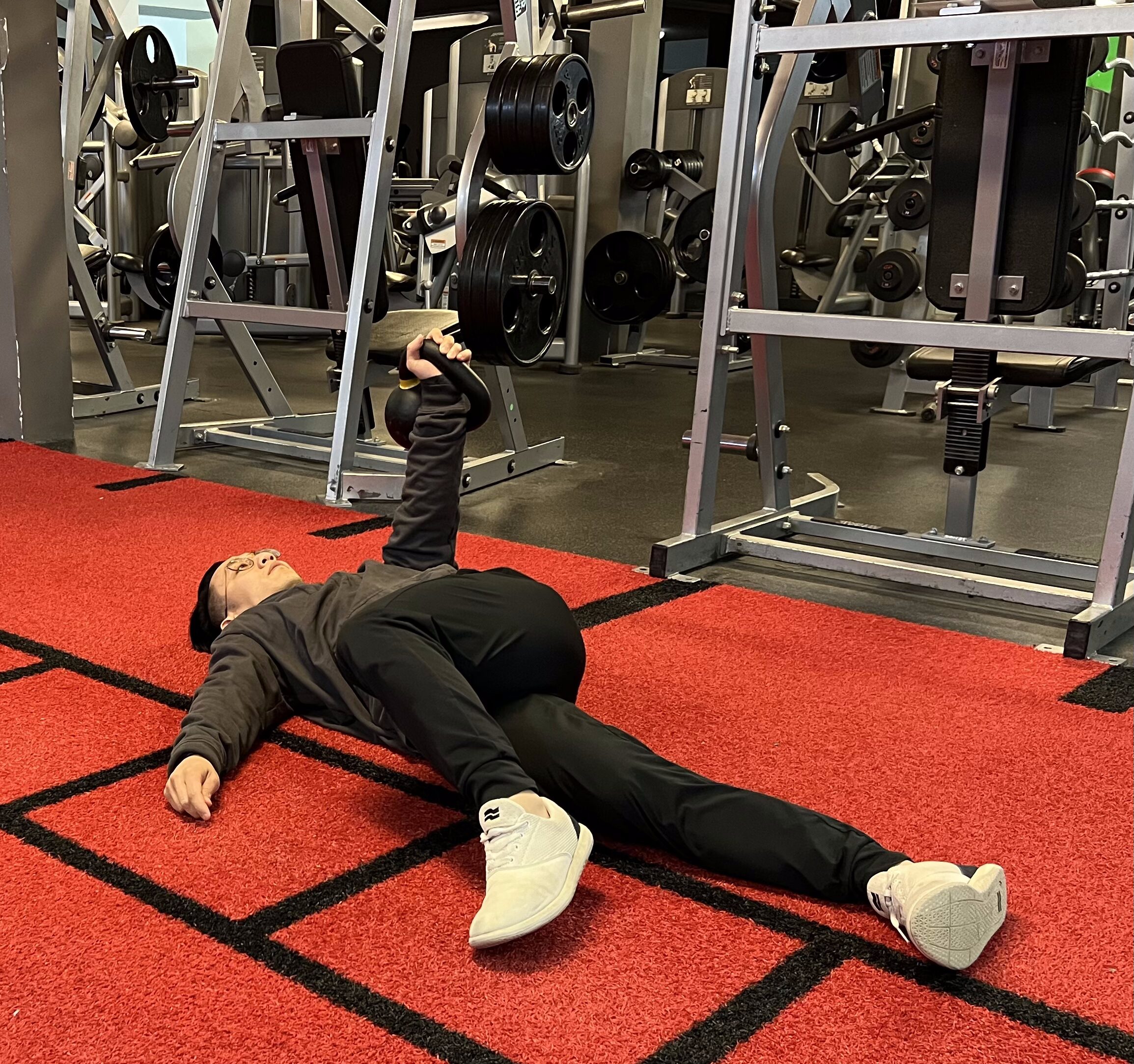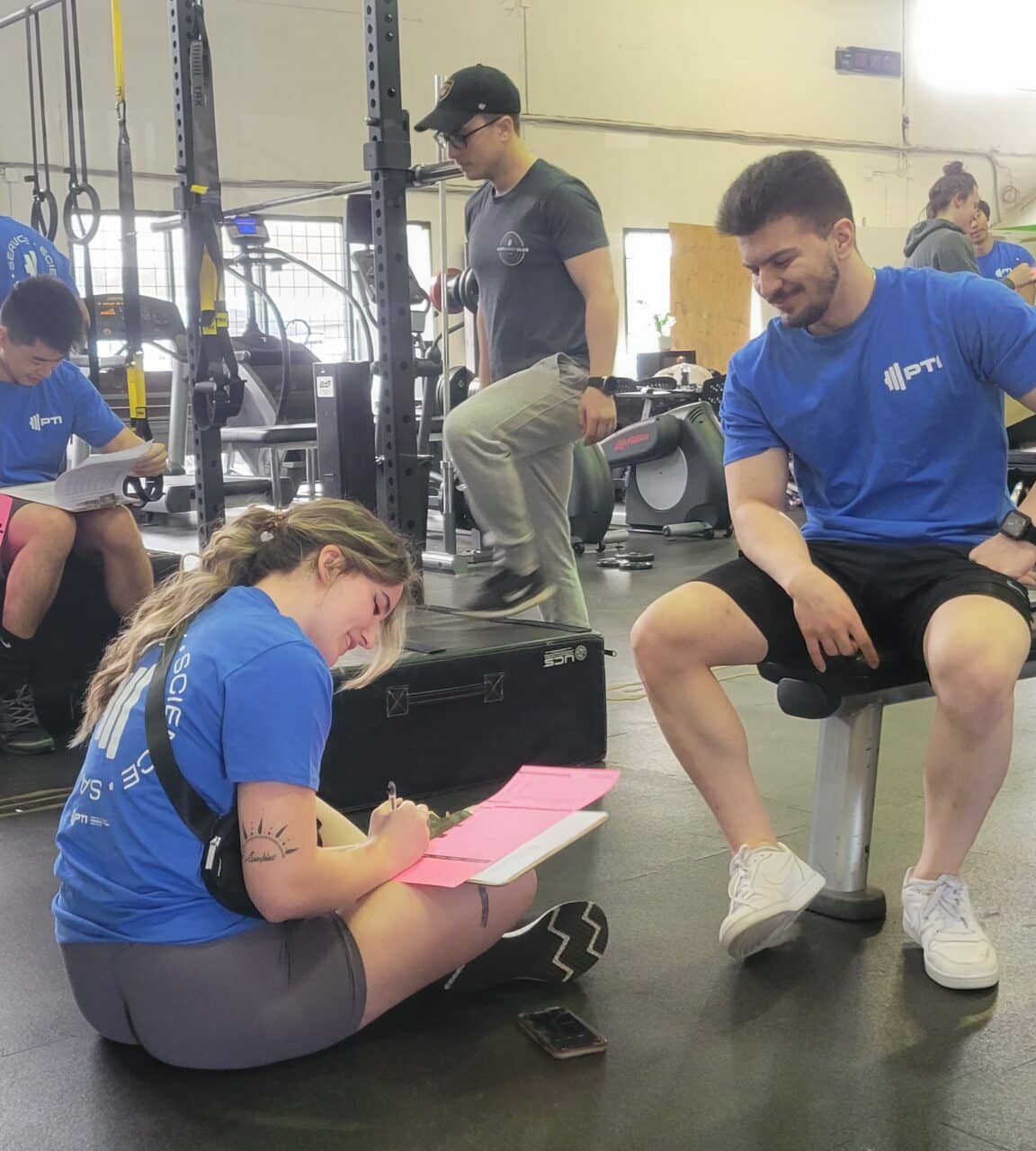November 14, 2018
Traits of a Great Trainer: Empathy
What is empathy?
There’s a story about a trainer, Drew Manning, who purposely gained, and then lost, 70 pounds.1

He claimed he did this because, as a lifelong fitness junkie, he had a hard time understanding what some of his clients were experiencing. So he quit working out and started eating junk food. After gaining the weight he then went to work and lost it in 6 months. While he admitted that it was probably easier for him than for his clients, he experienced much of what they go through – including withdrawal from junk food, feeling lethargic and poor body image. The experience means he can now empathize with his clients in a way he wasn’t able to before.
While this might be an extreme example, it illustrates the concept of empathy quite well.
Empathy is:
- The ability to understand and share the feelings of others.
- Google Dictionary
In Drew’s case, he put himself into the same physical state and worked through the actual process of weight loss that many of his clients came to him for help achieving for themselves. He earned the right to say “I understand how you feel. I’ve been through a similar experience.”
For many people, especially those new to fitness, it can feel really intimidating to sit with/speak to a personal trainer because of the perceived gap in empathy. The new member starts imagining the pain and embarrassment they will suffer because the trainer doesn’t understand what “out of shape” feels like. By role, a trainer embodies fitness, good nutrition, athleticism, strength, confidence, knowledge and a “shut up and get it done” kind of execution. In fact, trainers that share a personal weight loss story – it can almost seem unreal. Like “how can that be – look at you now!”
Important note: while I’ve used the example of extra body fat and the desire to achieve weight loss, there are many other instances of the empathy gap:
- Older clients who don’t think a young trainer will understand their body, their joints, their age, their goals (i.e.. They want to get healthier but they don’t need a six pack)

- Clients recovering from injury (who already carry a level of fear resulting from the pain of their injury)

- During or post-pregnancy (a woman’s body experiences lots of changes and even a trainer they worked with before having a child may not understand the challenges of returning to fitness while also caring for a new baby!)

- Clients that are shy and lack confidence in the gym and/or in themselves. While it might seem like they need the help of a trainer even more, imagine the embarrassment and discomfort they would feel working with a trainer who is loud, enthusiastic and draws attention to them on the gym floor!

In order to break down the barrier of “I’m not ________ (ie. fit enough) to work with you… give me a few months on my own and then I’ll come back to you” learning to increase your empathy skills can really help you build your client base and ensure that the most vulnerable members achieve success!
Empathy vs Sympathy
You might know of Brené Brown from her bestselling books or her viral Ted talk on the Power of Vulnerability. She is at the forefront of a growing number of researchers, authors, therapists, teachers and leaders who are digging into shame, vulnerability, courage and leadership in order to improve cultures and practices in parenting, teaching, relationships and the world of work. The reason I’m including her ideas in the blog is because vulnerability plays a crucial role in real empathy. I’m not going to share a couple of empathy hacks and pretend that you can lip-service your way to more meaningful relationships with your clients. If we really want to help people, we have to care about them.
“There is a positive correlation between feeling empathic concern and being willing to help others.”2
As she describes empathy and the practice of “sharing space” with someone who is sad, depressed, stressed, anxious or overwhelmed, Brown says that empathy3 is:

Let’s look at 2 important terms, empathy and sympathy. They are often grouped together but there’s a big difference between them.
Empathy is a skill that can bring people together and help people feel included. Sympathy, on the other hand, creates an uneven power dynamic and can lead to more isolation and disconnection. It’s an unfortunate outcome given that sympathy is usually coming from a good place4.
- Sympathy: feelings of pity and sorrow for someone else’s misfortune
Here’s an example of sympathy:
Client: I’m sorry I’m late, my kids just didn’t want to get out of bed this morning so I was scrambling to get them ready and I didn’t have time for breakfast or my warm-up.
Trainer: Kids, right? That sucks. Well, at least you made it – we’ll just skip your rests and still fit the whole workout in.
Can you relate? Admittedly I’ve even uttered that phrase in the past! So what’s the issue? If you put yourself in that mother’s shoes for a minute, can you feel her frustration? Can you imagine trying to coerce a child to cooperate, running out the door knowing your late, cursing at every red light while the kids are probably cranky in the back seat, then trying to find parking at the gym, hauling a couple kids into childminding and dropping them off with the staff member, already hoping that they behave so you can get your training session in? You stash your stuff in a locker, see on the clock in the changeroom that you’re late and then you rush past the cardio machines you should have warmed up on, see you trainer standing at the desk (impatiently?) and then after a shameful and hurried explanation you get shot down pretty quickly and have to just follow along and jump into the workout. How does that feel?
Here’s an alternative that demonstrates empathy instead:
Client: I’m sorry I’m late, my kids just didn’t want to get out of bed this morning so I was scrambling to get them ready and I didn’t have time for breakfast or my warm-up.
Trainer: That sounds like a rough start to the day. I’ve totally been there – I felt really rushed the other day when my alarm didn’t go off on time! Is there anything I can do to help you feel more settled before we get started?
Can you feel the difference in this response? We’ve humanized the experience and helped frame it up as normal. It happens to us all – while it can be vulnerable to share our own challenges or mistakes, it creates the opportunity for connection and caring. It’s also a way more supportive stance and ensures that your client feels like you’re on their side instead of them having to fight you in addition to their kids, traffic and the clock.
OK, so the example makes sense but what if you’re not a naturally empathetic person? The good news is, empathy is a skill. We can get better at it with practice. In fact, there are even 2 different kinds of empathy2.
- Emotional empathy – a more natural response that consists of 3 separate components
- Feeling the same emotion as another person
- Personal distress: your own feelings in response to someone else’s suffering
- Feeling compassion for another person
- Cognitive empathy – a skill that can be practiced and improved upon; how well an individual can perceive and understand the emotions of another; having more complete and accurate knowledge about the contents of another person’s mind, including how the person feels
If you need some practice with empathy, it helps to break it down into some smaller steps.
Brown’s 4 tools for showing empathy:
- Perspective Taking, or putting yourself in someone else’s shoes
Try to imagine the circumstances that your client is facing. Ask them open-ended “what” and “how” questions. If they’ve shared a struggle or challenge with you, close your eyes and put yourself in their position. Try to see the problem from inside their head. Look for solutions that exist inside of their skill set and experience instead of from your own knowledge and habits.
- Staying out of judgement and listening
REALLY LISTEN. That means being curious about their experience, their thoughts, their upbringing, their beliefs. If you seek to understand you’re also committing to sharing their experience. There’s another saying you may have heard, “no one cares how much you know until they know how much you care.” Instead of labelling them “lazy” or “unmotivated” or “they just don’t get it” just listen to what they are telling you. Encourage them to share. Say “tell me more.” Not only do you gain valuable insight into what they are dealing with, but you’re also giving them a very precious gift: being heard.
- Recognizing emotion in another person that you have maybe felt before
Sometimes people are good at naming their emotions (ie. I’m frustrated, I’m overwhelmed, I feel disappointed, I’m really angry right now, I feel betrayed, etc.) and that can help us recognize and relate to what their feeling. But other times, and more commonly, people can’t name or process their emotions, especially in the heat of the moment. Instead, we have to listen for clues, or use our own experiences of similar situations to try to recognize the emotion they are dealing with. If we can, our shared experience (of the emotion, if not the exact situation) can really help create connection.
- Communication that you can recognize that emotion
The last step is the vulnerable one. If someone is feeling sad/stressed/overwhelmed, showing empathy is actually sharing that emotion with them. We may not be in the same physical pain (research shows that shame, fear, humiliation and stress actually light up the same areas of the brain as physical pain) but we “climb down into the hole” in order to show5 “you are not alone.”
This is important because when people are facing a challenge or dealing with a difficult situation, they are not looking for a magic response that will fix everything. They may be looking for someone who can help them help find a solution. They may be looing for someone who has been through a similar challenge before. They are definitely looking for a connection, and that’s what empathy is all about.

To wrap it all up, we often talk about the 3 S’s of training: service, science and sales. When it comes to empathy, I hope you see the connection to service. Building a strong relationship with your client allows for so much more than just the physical transformation that the science of nutrition and exercise creates. When we try to understand their perspective, listen and stay curious about their experiences, recognize the emotions they go through AND can communicate our partnership in their process, we serve our clients in really important mental and emotional ways as well. Ultimately, to help them navigate the challenge of change, empathy is a powerful tool in your toolbox and practicing it can take you from good to great!
Resources for this blog or recommendations for more info:
- http://1. http://blog.elivatefitness.com/features/training-insights/run-a-mile-in-your-clients-shoes-empathy-training-for-personal-trainers/
- http://2. https://lesley.edu/article/the-psychology-of-emotional-and-cognitive-empathy
- http://3. https://www.happify.com/hd/best-definition-of-empathy-brene-brown/
- http://4. https://twentyonetoys.ca/blogs/teaching-empathy/brene-brown-empathy-vs-sympathy
- http://4. https://twentyonetoys.ca/blogs/teaching-empathy/brene-brown-empathy-vs-sympathy
Brené Brown books:
- The Gifts of Imperfection
- Daring Greatly
- Rising Strong
- Braving the Wilderness
- Dare to Lead
Blog by:
Logan Dube
Director of Education
Tags:
Related Posts
We’re here to help you!
Questions, comments or want to register? Fill out the form below and we will contact you shortly. Thanks!
"*" indicates required fields



